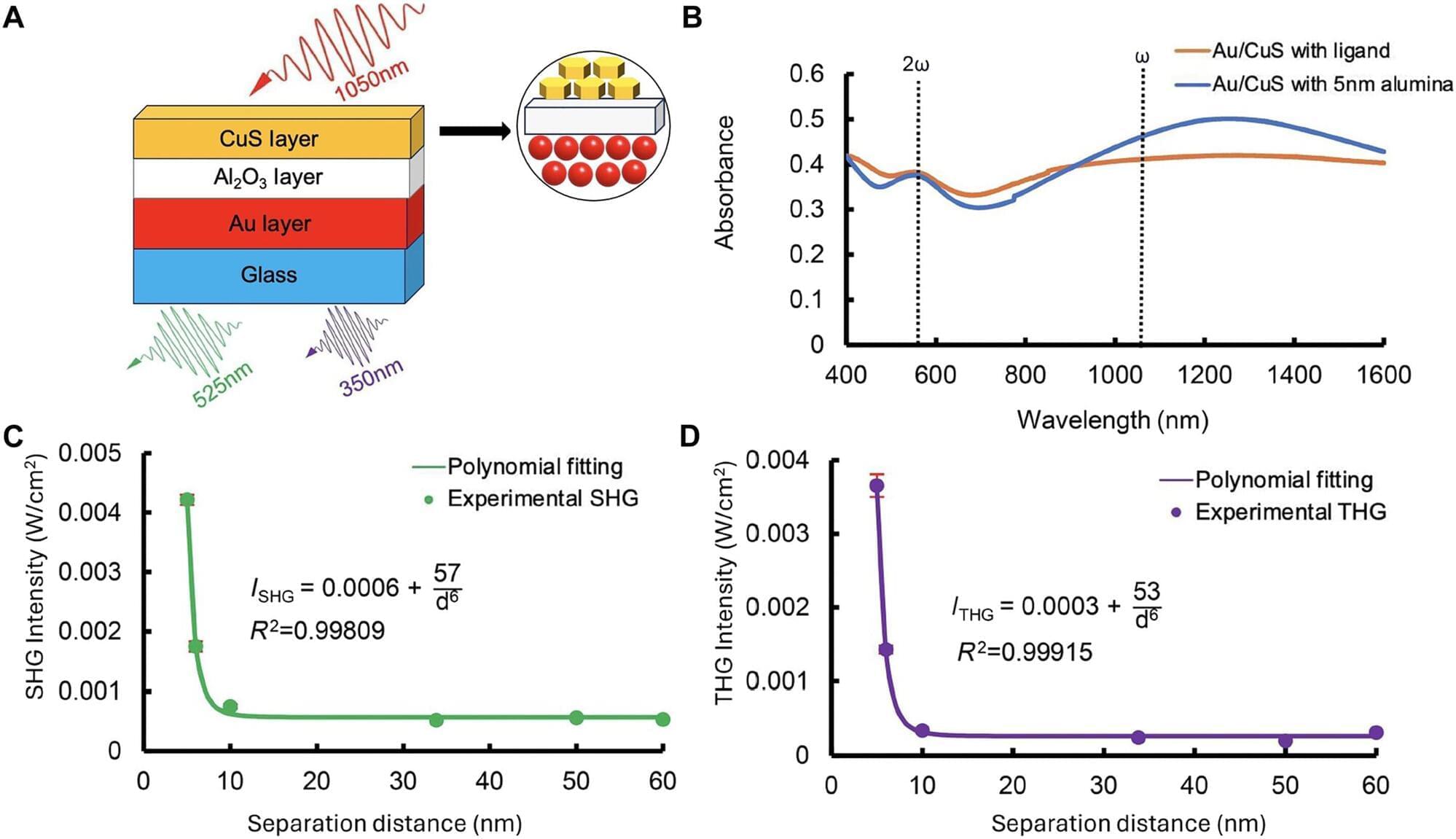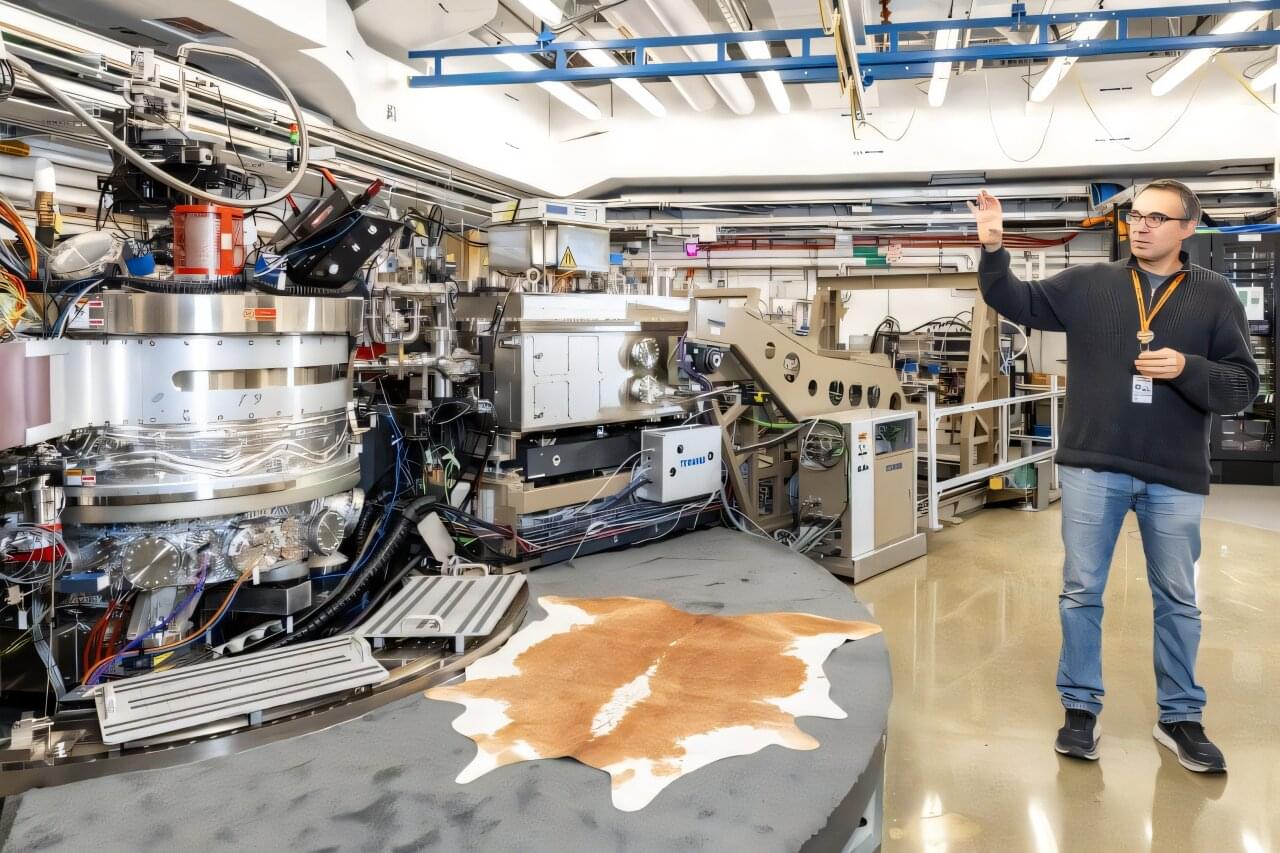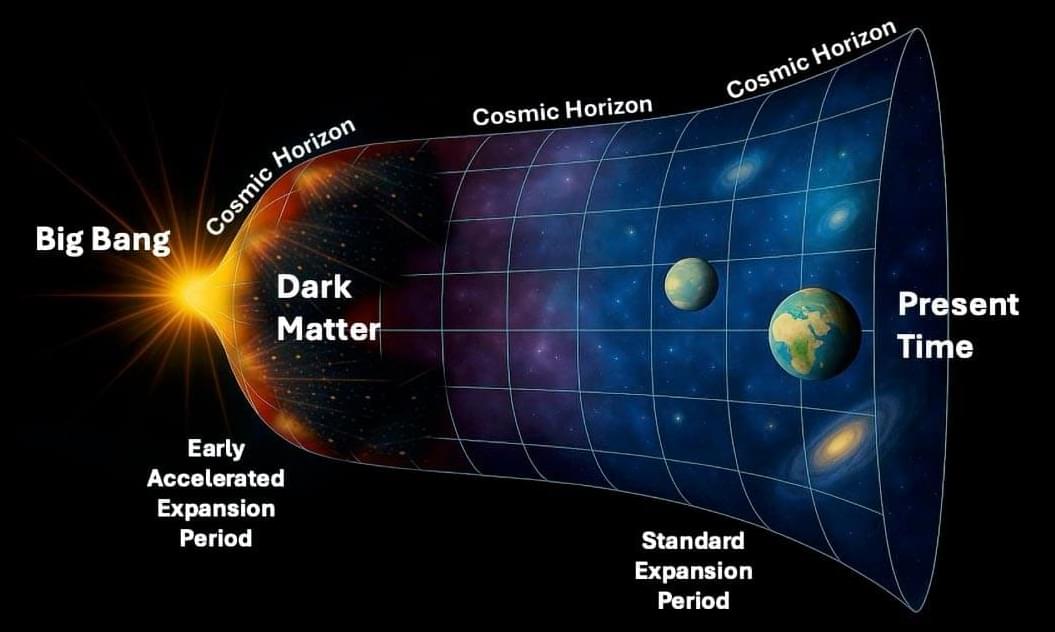A new breakthrough in the field of physics led by doctoral student Yueming Yan could allow for the creation of small, thin, low-power optical devices to be used in both medical imaging and environmental sensing.
In a study published in Science Advances, Yan and his colleagues, including Associate Professor of Chemistry Janet Macdonald and Stevenson Professor of Physics Richard Haglund, examined tiny nanoparticles of metals and semiconductors, specifically gold and copper.
The team laid down two ultrathin layers of gold and semiconducting copper sulfide nanoparticles, creating a “sandwich” 100 times thinner than a human hair. They then zapped this sandwich with a flash of light shorter than a trillionth of a second. Doing so caused the particles to “chat” back and forth, exchanging energy so efficiently that they re-emitted light in multiple different colors.








